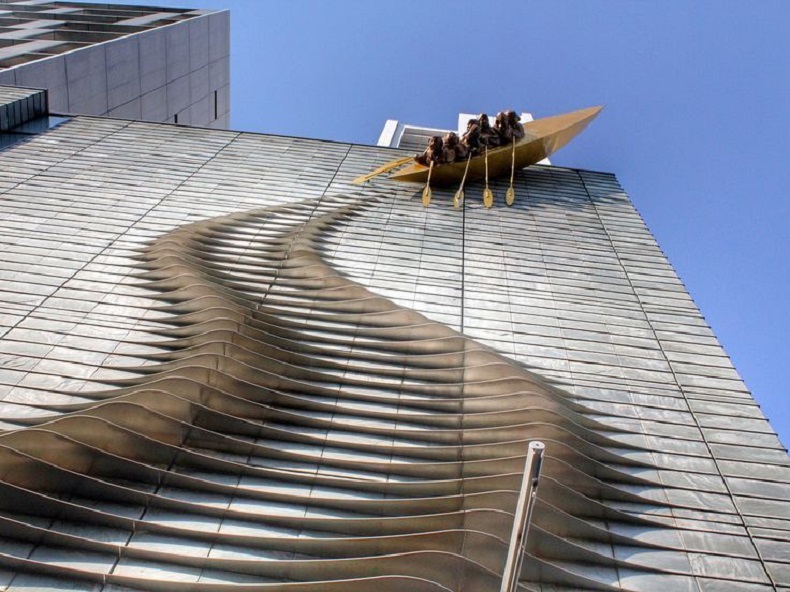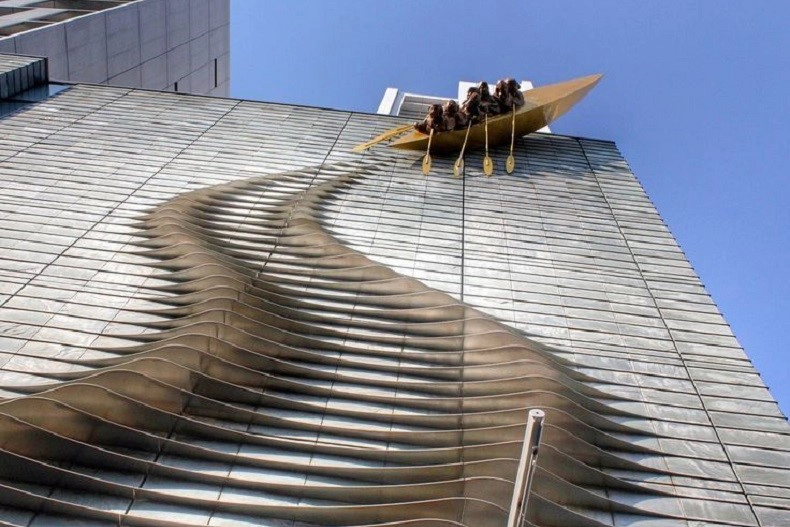Snow, rain, sun, wind, waves. One has to withstand all of these while moving backwards. Rowing is a specific discipline that may be reminiscent of elegant skating on the water’s surface but depends on huge physical effort and complete team synchronisation. The alluringly white length of the bow breaks the contrasting blue surface. It’s not surprising that this noble sport became an inspiration for many artists, including contemporary ones.
They say that rowing builds character. That it can prepare us for life, so we can deal with whatever obstacles we end up finding on our way. Athletes compete in several categories, from single-oar rowers to boats with eight rowers and a coxswain. There are up to fourteen rowing categories in the Olympics. Rowing is considered to be one of the oldest Olympic water sports. While men competed for the first time in the year 1900, women joined 76 years later. The beginnings of modern rowing as a competitive sport go back to the beginning of the 17th century to professional races (regattas) on the rivet Thames in London, England. Later, the first yacht and rowing clubs, including university ones, began appearing all around the world. However, the first mentions of rowing are from the year 1430 BCE when, according to discovered texts, rowing races took place as part of funeral celebrations.
Kcho (Alexis Leyva Machado)
Cuban artist Alexis Leyva Machado, better known in the art world as Kcho, views the world of boats and rowing from a different angle. Kcho is one of the best-known contemporary Cuban artists. His work has been telling stories since 1986 when he held his first exhibition based on everyday objects he found in his surroundings. It gave origin to unique sophisticated objects thanks to which he soon received worldwide renown. One of the pillars of his work is a world of oars and boats that he stacks on top of each other in his installations. He weaves them together, paints them or draws them, inspired by the 90s Cuban migration crisis or the enveloping sea that surrounds the island of Cuba.
.jpg)
Revere La Noue
American painter, documentarist and founder of The Mascot Gallery. In 2012 he founded a two-storey studio and exhibition space on Main Street in Durham, North Carolina. He created a series of paintings inspired by rowing. The one depicted here shows eight rowers returning from a morning training session. Behind them stands the previous rowing generation holding oars of various shapes which were used during the history of this sport.
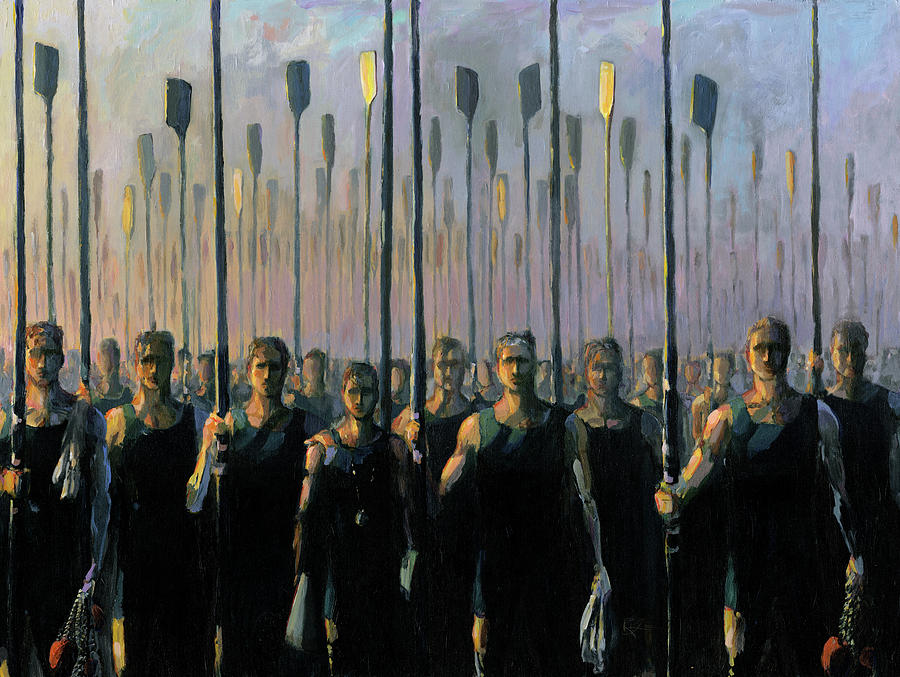
Michael Rittstein
Those familiar with the Czech art scene will surely recall the geyser of colour from Michael Rittstein’s (1949) canvases. He’s attracted by water and spends almost every day in or near it. He even claims to have come up with many topics for his works while swimming. In 2011 he was commissioned by the Czech Olympic Committee to create a series of twenty-seven sport-themed paintings. Rowing was also included and he even dedicated several canvases in his Sports Epic to the discipline. Petr Volf, who mentions Rittstein’s work in his book Sport je umění (Sport is Art), says: „He accomplished an exceptionally valuable artistic performance which was simultaneously very physically demanding. Each day when painting large canvases he had to make thousands of squats to reach the canvas lying on the ground with his acrylic brush. It took a full year for the Olympic paintings to be completed.“ You can see examples of Rittstein’s work at an upcoming exhibition Primátorky which celebrates the legendary Vltava row-boat race.
.jpg)
Marco Ronga
He calls people he paints ‘body-landscapes’ and the environments surrounding him ‘portraits of places’. Italian painter Marco Ronga likes colours and likes to conduct almost fauvistic experiments. His paintings breathe in the Mediterranean atmosphere and when looking at them you feel the urge to pack up a bag and head to the sea to wander along the beach in the setting sun.
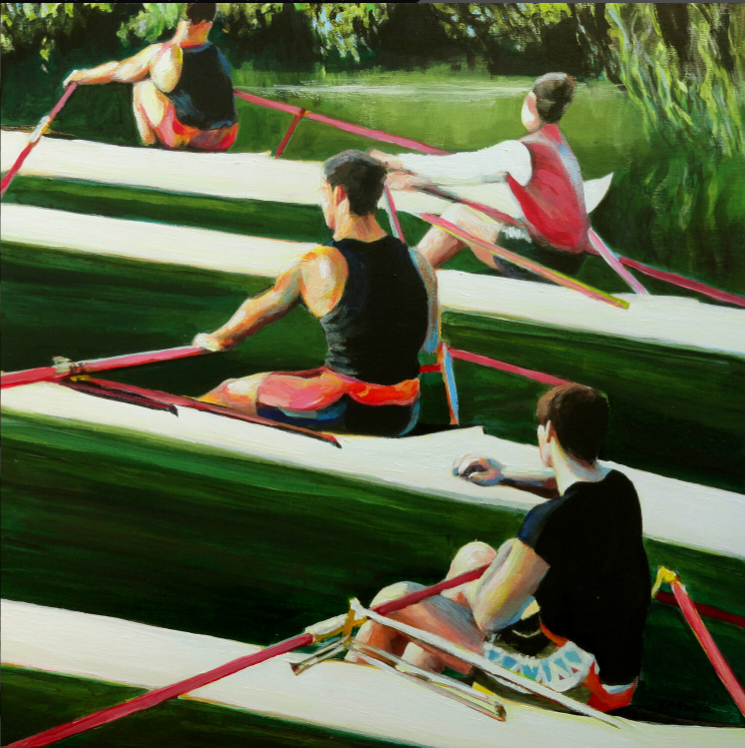
Judy Joel
Through her naive approach, Judy joyfully interprets the world around her. Much like the tollman Henri Rousseau, Judy Joel is also self-taught. Painting was always a passion of hers and when she was offered to put on a solo exhibition in London, she couldn’t believe it. Her paintings are currently included in collections all around the world, including, for example, Saatchi gallery.
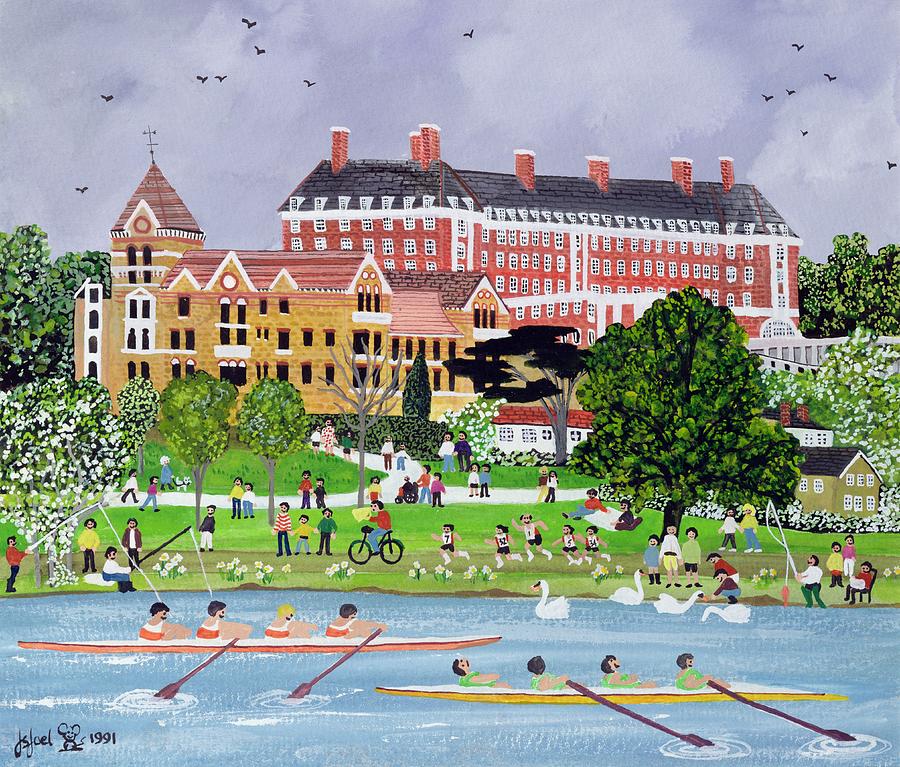
Katie Hallam
Katie Hallam enjoys photographing and subsequently destroying the results of her work. Her practice examines the construction and deconstruction of photos through code, image data, pixellating and glitches. The iconic rowing image from The Beautiful Error series was taken on the River Thames in Henley.

Jan Fabre
We mustn’t forget the unique interpretation of this sport by Belgian artist Jan Fabre (1958).

Lisa Nance
Lisa, queen of collages, has an unparalleled sense for creating new realities.

Luke Smalley
Luke Smalley (1955-2009) was an American photographer famous primarily for his playful images of adolescent boys who wrestle, exercise or lift weights, explore their sexual identities and experience the beauty of growing up. He drew from the aesthetics of old fitness manuals and often created the props for his photos himself. His pictures appeared in magazines like Vogue, Hommes and Dazed.

And finally, rowing is popular even in Japan, specifically in Osaka where a rowboat sails up to the sky on the facade of The Entrepreneurial Museum of Challenge and Innovation.
